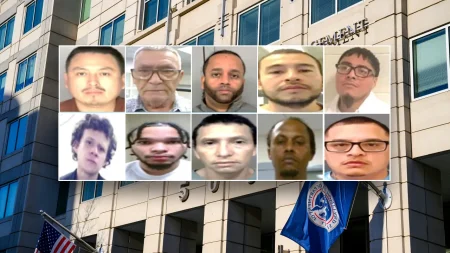The Human Impact of Recent Supreme Court Rulings on Deportation Policy
Last week’s hearing involving five migrants deported to Ghana offered a revealing glimpse into how Supreme Court precedents have facilitated President Trump’s ambitious mass deportation initiatives. The case highlighted the very real human consequences of judicial decisions that may have seemed abstract when first handed down. As the courtroom drama unfolded, it became increasingly clear that what we witnessed wasn’t merely a technical legal proceeding but rather the culmination of a series of judicial determinations that have dramatically reshaped America’s immigration enforcement landscape. The plight of these five individuals from Ghana represents thousands of similar stories unfolding across the country—stories of lives disrupted and futures uncertain, all flowing from the legal groundwork laid by previous Court decisions.
The deportation of these Ghanaian migrants exemplifies how the current administration has leveraged existing legal frameworks to expedite removals. Court observers noted how government attorneys repeatedly cited key Supreme Court opinions that expanded executive authority over immigration enforcement while simultaneously limiting judicial review options for affected individuals. What makes this case particularly significant is how it demonstrates the real-world application of legal principles that, when originally decided, may have seemed like narrow technical rulings. Instead, they’ve become powerful tools enabling a dramatically expanded deportation apparatus. The five deportees, whose names and individual circumstances were barely mentioned during proceedings, represent the human cost of these abstract legal doctrines—individuals caught in a system increasingly designed to process rather than protect.
Behind the sterile courtroom language and procedural discussions lies a profound human reality: families separated, communities disrupted, and lives fundamentally altered. Testimony revealed that several of the deportees had established deep roots in America—one had lived in the country for over fifteen years, another had three U.S. citizen children, and a third was the primary caregiver for an elderly American parent. Yet these humanitarian considerations carried little weight against the legal precedents that have increasingly tilted the balance toward enforcement rather than discretion. Advocates for the deportees argued passionately that the Court should consider these human factors, but government attorneys countered that existing case law grants the executive branch broad authority to determine deportation priorities with minimal judicial interference. The tension between human impact and legal doctrine was palpable throughout the proceedings, raising profound questions about the proper balance between enforcement, discretion, and human dignity.
The Ghana case illuminates how several key Supreme Court decisions have gradually constructed a legal architecture that enables mass deportation with limited judicial oversight. A series of rulings over the past two decades has systematically narrowed immigrants’ legal protections while expanding executive authority over immigration enforcement. These decisions have limited migrants’ ability to challenge factual errors in their proceedings, restricted habeas corpus rights for detainees, allowed for indefinite detention in certain circumstances, and curtailed judicial review of expedited removal orders. While each ruling might have appeared narrow in isolation, together they have created a formidable legal foundation for the current administration’s enforcement agenda. Legal experts observing the hearing noted how government attorneys skillfully wove these precedents together, creating a nearly impenetrable legal shield against challenges to the deportation orders, even when legitimate humanitarian concerns existed.
Perhaps most striking was how the Ghana case revealed the gap between public understanding of deportation processes and the complex legal reality. Many Americans imagine deportation proceedings as careful, individualized evaluations where humanitarian factors receive significant consideration. The reality, as demonstrated in this hearing, is starkly different—a streamlined system where procedural efficiency often trumps individual circumstances. Several of the Ghanaian deportees had valid claims that might have allowed them to remain in the U.S., but procedural barriers prevented these claims from being fully considered. One deportee had missed a filing deadline by just three days due to a medical emergency; another had received ineffective assistance from a previous attorney who failed to submit critical evidence. Under earlier interpretations of immigration law, such circumstances might have warranted discretionary relief. However, Supreme Court rulings have progressively limited judges’ ability to consider such factors, creating a system where technical compliance frequently outweighs humanitarian concerns.
As the hearing concluded, the broader implications of the case became evident—these five individuals represent thousands of others caught in similar circumstances, their lives fundamentally altered by legal interpretations that prioritize enforcement efficiency over individual circumstances. Legal experts warn that without legislative intervention or a significant shift in judicial philosophy, the current trend will continue, potentially affecting millions of migrants living in the United States. The Ghana case demonstrates how legal precedents, often invisible to the general public, shape the lived experiences of vulnerable populations. While the legal arguments focused on jurisdiction, statutory interpretation, and executive authority, the true stakes were much more profound: whether our legal system can balance enforcement needs with humanitarian considerations, whether procedural regularity can coexist with substantive justice, and ultimately, whether America’s immigration system reflects the nation’s professed values of compassion, proportionality, and human dignity.








